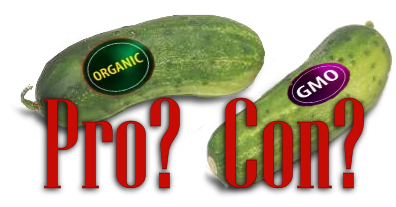Genetically Modified Organisms (GMOs)

Genetically Modified Organisms (GMOs) is a topic I have avoided for these articles. There are some pretty strong feelings about the benefits and problems with GMOs. A good friend of mine told me to write about GMOs and I didn’t like the idea, but a couple days later I learned that Congress recently passed a GMO labeling bill. So, I felt it was time to write about GMOs.
In the US, by 2014, 94% of the planted area of soybeans, 96% of cotton and 93% of corn was genetically modified varieties. So, if you’re eating corn and soy, they have likely been bio-engineered.
GMOs were introduced in 1973. In 1994 the first genetically engineered food was commercially sold, the Flavr Saver tomato. Arctic flounder genes were spliced into the genetic make-up of tomatoes. This tomato wasn’t successful in the marketplace and didn’t last. Roundup ready corn is the most widely known GMO. Some farmers appreciate the GMO corn because it saves them tons of time in spraying their crop. They also aren’t in contact with the spray. In the US, by 2014, 94% of the planted area of soybeans, 96% of cotton and 93% of corn was genetically modified varieties. So, if you’re eating corn and soy, they have likely been bio-engineered.
Until recently, in the United States, the only way you know a product isn’t genetically modified is if it is labeled as certified organic. GMOs are not allowed in certified organic production. Some companies have taken a proactive approach to labeling GMOs. In response to a Vermont law passed earlier this year, General Mills launched a site to help consumers know if products contain GMOs: http://www.generalmills.com/Ingredients. The GMO labeling bill passed by Congress isn’t what people in opposition had hoped for and it isn’t what supporters of GMOs wanted either. The required label will only need to be a QR code and does not need to tell the consumer directly whether the products contain GMOs. Some people preferred no labeling at all, to not provide consumers information about what is in their food.
What is genetic modification or bio-engineering anyway? It’s the process used to create genetically Modified Organisms. It’s the direct manipulation of an organism’s genetic make-up using biotechnology. Some people call it “cell invasion”. There are three different processes in creating GMOs. They are 1. E.coli bacteria is combined with a soil bacteria that causes tumors that allows the foreign bacteria to breach the host plant’s cells. 2. Electricity is applied to the host plant to rupture its cell walls, thus allowing the foreign DNA to invade; or 3. A “gene gun” blasts the engineered DNA directly into the plant’s cells. These processes allow the cell wall of an organism to be breached so that foreign DNA can be inserted into the genetic make-up of the organism. This is how they are about to cross fish with tomatoes to get Flavr Savr tomatoes. I’ve heard the term frankenfood used to describe GMOs.
If you haven’t read between the lines, I’m obviously not a huge supporter of genetic manipulation. I prefer old-fashioned ways of breeding for chosen characteristics. I do understand that some GMOs have relieved some of the hard work for farmers and so I typically avoid the debate. I have tried to be as neutral as possible on this topic. I make no apologies for not taking a hard stand on the issue. The best way to know you’re not consuming a ton of genetically modified organisms is to eat fresh from the garden. Know your farmer, know your food.